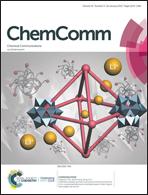In situ confined-synthesis of mesoporous FeS2@C superparticles and their enhanced sodium-ion storage properties†
Abstract
Mesoporous FeS2@C superparticles chemically converted from Fe3O4 nanoparticle superlattices were used as anode materials for sodium-ion batteries with superior electrochemical performance. The partial etching of Fe3O4 nanoparticles creates appropriate void space, which is beneficial for confining the growth of ultrasmall FeS2 nanoparticles during sulfidation and for mitigating volume change of active materials during cycling.



 Please wait while we load your content...
Please wait while we load your content...